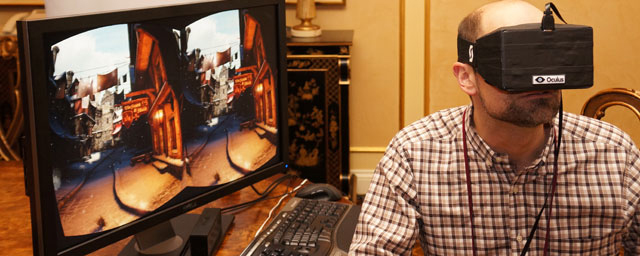New Prototype Is a Huge Step Toward Consumer VR

Since its introduction through a $2.5 million Kickstarter campaign, the Oculus Rift has always been popular with the technology and game media. Affordable consumer-level virtual reality has been a goal of the technology industry since the early 1980’s, fueled by such iconic films as Tron, Lawnmower Man and the Matrix.
The new Crescent Bay prototype, introduced by Oculus CEO Brendan Iribe on September 20th, is being touted as the next step towards the virtual reality goal. The new system has better weight distribution, 360 degree tracking and integrated audio.
The Oculus Rift and each new iteration have been on a trajectory to become the presentation platform of choice for many kinds of video games. Since the company has worked closely with legendary game developer John Carmack, it stands to reason the new devices will be expected to work well with first person shooters and other genres of games that are designed to put the player in the action.
Among the improvements is a reportedly much more stable set of attachments for the head unit which serve to keep the field of vision centered. As the user moves, the unit remains in place more reliably now. This will undoubtedly help in applications like motion sensitive games which often see aggressive movement by players.
In all there are thirteen new demos, including ones that seem to emphasize applications beyond action games. Users are encouraged to examine objects, move in virtual space and observe as much as they interact. The 90Hz refresh rate removes artifacts like missing pixels and tearing of the display when moving the device quickly from one direction to another.
The feature the media is looking forward to most is what they call “presence.” Everyone is eagerly awaiting a time when they can experience what it is like to actually trick their minds into believing they are “present” in the virtual environment. This is the ultimate test of a device like the Oculus Rift.
Although Oculus will not provide much detail on the specifications of their device, what they have demonstrated is a major advance towards a future where virtual reality is… well… reality.
